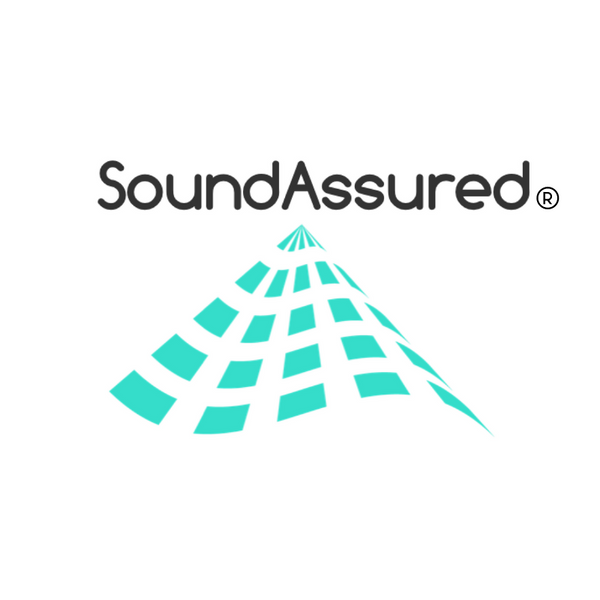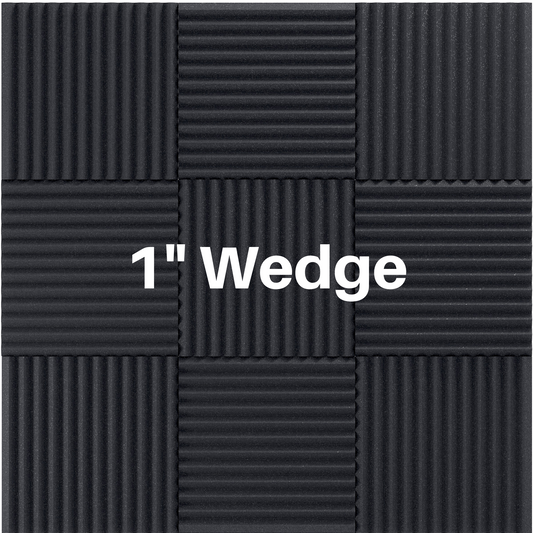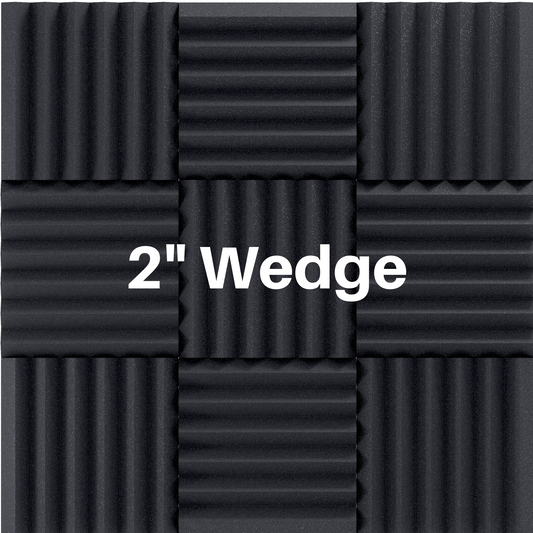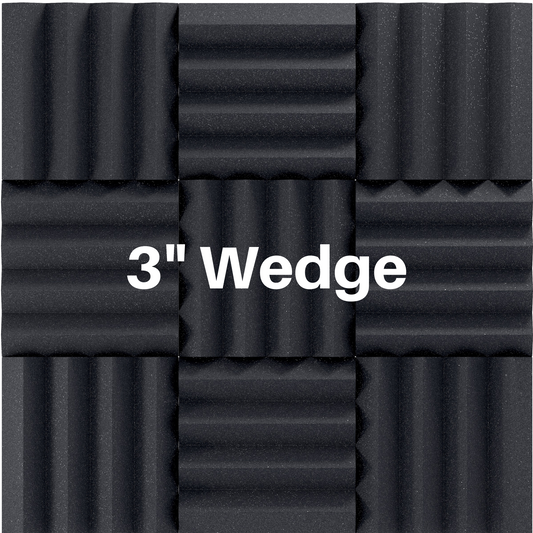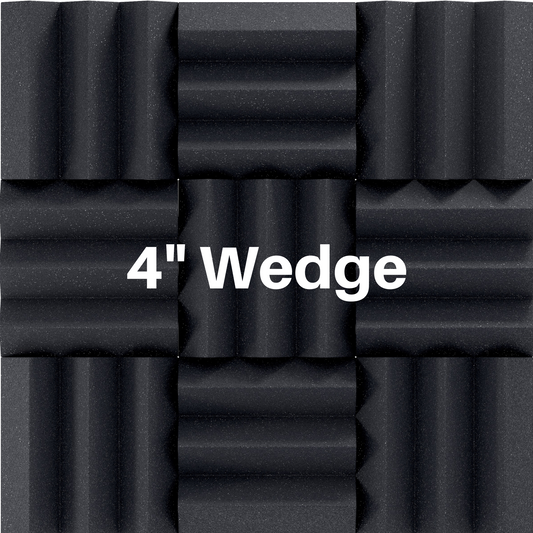How To Find First Reflection Points By Yourself
Share
Understanding Sound Reflection
If you want to explore second reflections it is helpful to understand how sound reacts when it comes in contact with a flat surface.
Sound waves reflect off surfaces much like light. Flat surfaces like drywall, wood, and concrete are what the sound waves bounce off of.
The angle of incidence is equal to the angle of reflection. This means that if the sound hits the wall at a 45 degree angle, the wave will bounce off the wall at a 45 degree angle.

Identify Source and Receiver
The first step to figuring out your first reflection points is to find the sound source as well and the receiver.
In a music hall there will be many sound sources. For example all the instruments in an orchestra, and the speaker system. Then think about all the receivers in the room. With all the sound sources and listening positions that is a lot of math! Luckily there are programs acousticians use to figure out problems this complex.
In this article we are going to focus on first reflections in small rooms with either one or two sound sources. The case we work on most with customers are small home recording studio setups with two monitors for mixing/mastering.
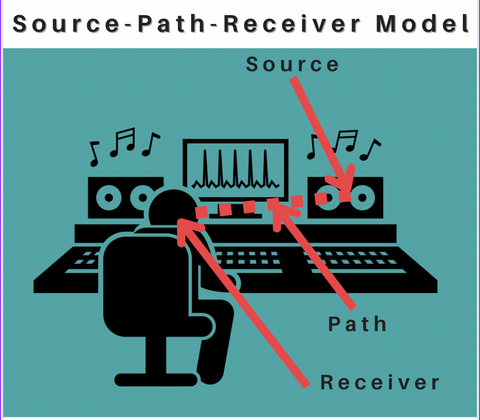
Another situation we deal with a lot is recording vocals into a microphone. We work with a lot of voice over artists, singers, and rappers who need to get clear recordings. In this case the source is the vocalist and the receiver is the microphone.
Draw Imaginary Lines
Draw imaginary lines between the source, the receiver, and the room surfaces. The goal is to find the paths that sound waves take when they travel from the source to the listener. Remember that the angle of incidence equal to the angle of reflection.
The drawing below shows imaginary lines drawn in a small room with two monitors.
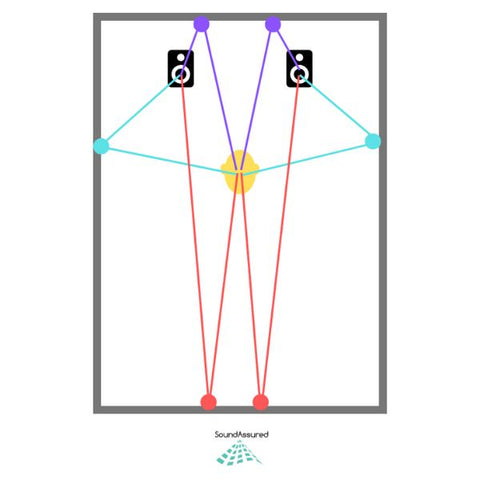
The purple line shows your first reflection point on your front wall. These spots are generally directly behind your monitors.
The red line shows the first reflections on your back wall. These reflections are simply where your speakers are pointing towards.
The teal line shows side wall reflections. These are probably the hardest to find but there is a trick.
TRICK: The side wall reflection points can be found using the mirror trick! All you need is a small mirror. Sit in the listening position and have a friend move the mirror around on the side wall while you look into the mirror. When you can see your monitors in the mirror, that is a first reflection point!
We covered the walls, but there is still another major first reflection point to worry about, the ceiling!
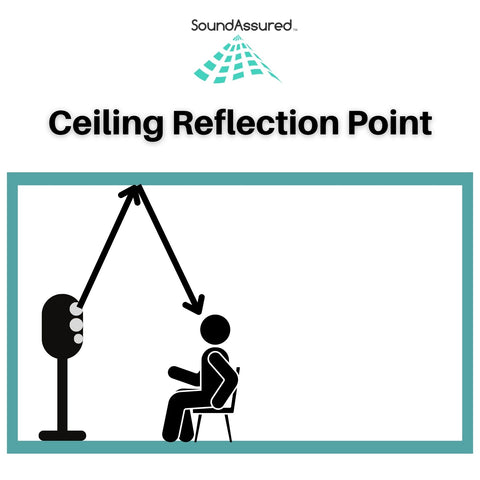
For the most part the ceiling reflection point is between the monitors and where you are sitting, so essentially above your studio desk.
Vocal Recording Reflection Points
In a vocal booth situation the ceiling treatment is most important directly above the mic and where the vocalist is standing. You can also do the mirror trick on the ceiling.
The diagrams below show the areas where you will want to place acoustic treatment.


Treating Your First Reflections
Now that you've identified first reflection points, consider placing acoustic treatments like absorbers or diffusers at the reflection points. This helps to minimize unwanted interference and improve the overall sound quality in the listening environment.
Sound will react differently depending on whether you choose to leave the reflection point untreated, treat with an absorption material, or treat with diffuser panels.
Reflection - Sound bounces off a surface. This occurs on flat and hard surfaces like drywall, hardwood floors, concrete and brick. The sound wave is deflected because it cannot penetrate or pass through the material. This creates echoes.
Absorption - Sound is absorbed by soft and porous materials like acoustic foam, an area rug, curtains etc. When a sound wave comes in contact with an absorptive material the sound energy is converted to a small amount of heat energy causing the sound to decay much faster.
Diffusion - When a sound wave hits an uneven surface like a bookcase or acoustic diffuser, the wave breaks up and is scattered. The scattered sound waves have much less energy per wave and will decay faster than a reflected sound wave.

Don't forget to experiment and fine-tune. Room acoustics can be complex, and the ideal placement of treatment may vary. Experiment with different treatments and positions to find the best balance for your specific room and preferences.
Sound Absorption Materials
There are many materials that are effective at absorbing sound, including:
- Acoustic foam: specially designed foam that is made of open-cell polyurethane foam or melamine foam, which is excellent at absorbing sound waves.
- Fiberglass insulation: fiberglass batts like Owens Corning 703 are a popular choice for DIY acoustic panels.
- Acoustic ceiling tiles
- Fabric panels: these panels use acoustically transparent fabric on the surface and a core of rockwool or fiberglass insulation to absorb sound. These are popular DIY panels.
- Felt polyester panels - these panels are made of recycled polyester and are great for absorbing high frequencies and eliminating echoes.
- Natural materials: certain natural materials such as cork and cotton can also be effective at absorbing sound.
Sound Diffusion Materials
- Wood diffuser panels
- PVC diffusion panels
- Uneven surfaces like bookshelves also work well at sound diffusion.
